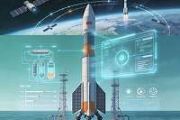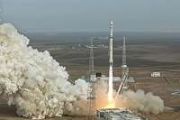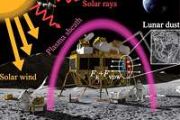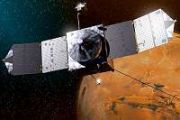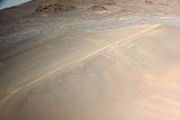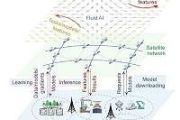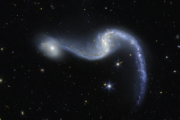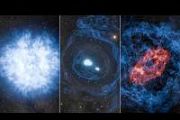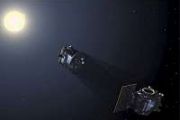
Copernical Team
Highlights from the test campaign of the Smile payload module in Europe
 Video:
00:03:53
Video:
00:03:53
This video shows the payload module for the Solar wind Magnetosphere Ionosphere Link Explorer (Smile) undergoing a series of different environmental tests at both Airbus Madrid, Spain, and the European Space Research and Technology Centre (ESTEC) in Noordwijk, the Netherlands.
These milestones include integration of the Soft X-ray Imager and ultraviolet instruments on the payload module (October 2021, Airbus Madrid); preparing and completing thermal testing of the payload module (11–24 Jan 2022, ESA/ESTEC); deploying the 3 m-long magnetometer boom under helium-filled balloons to simulate the weightlessness of space (27 Jan 2022, ESA/ESTEC); vibration testing (Feb 2022, Airbus Madrid);
Ground-based rover’s touch shared with astronaut in space
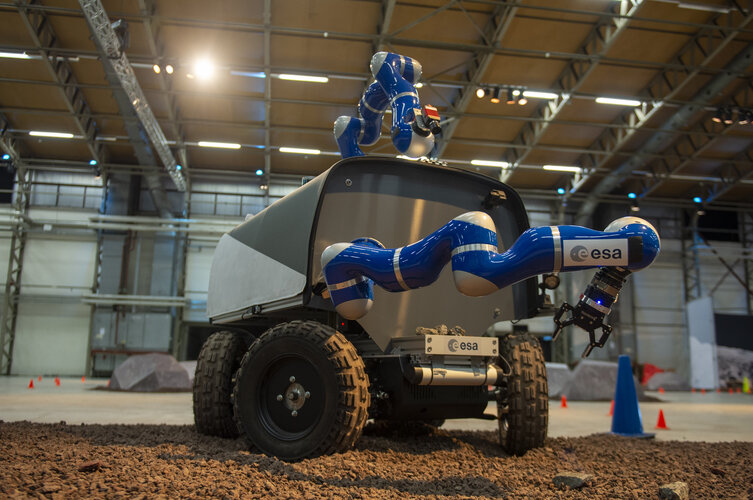
If man’s best friend is a dog, then in the future astronauts’ closest companions might well be rovers. A technique allowing astronauts in orbit to control rovers exploring planetary surfaces has been developed by a research team from ESA, the German Aerospace Center DLR and European academia and industry, culminating in an Earth-based rover session commanded from the International Space Station. A paper published in the prestigious Science Robotics journal this week details their results.
BlackSky supports customers during Ukraine crisis
 BlackSky (NYSE: BKSY) has demonstrated the ability to rapidly shift orbits, launch two new satellites, and collect images over Ukraine all within a 45-day window. In addition to generating a strategic increase in constellation capacity, customers received dawn-to-dusk analytics and imagery products of Ukraine within 24 hours of the company's most recent launch on April 2.
"We're setting a
BlackSky (NYSE: BKSY) has demonstrated the ability to rapidly shift orbits, launch two new satellites, and collect images over Ukraine all within a 45-day window. In addition to generating a strategic increase in constellation capacity, customers received dawn-to-dusk analytics and imagery products of Ukraine within 24 hours of the company's most recent launch on April 2.
"We're setting a Modeling Earth's Magnetosphere in the Lab
 A magnetosphere forms around any magnetized object, such as a planet, that is immersed within a stream of ionized gas, called plasma. Because Earth possesses an intrinsic magnetic field, the planet is surrounded by a large magnetosphere that extends out into space, blocks lethal cosmic rays and particles from the sun and stars, and allows life itself to exist.
In Physics of Plasmas, by AIP
A magnetosphere forms around any magnetized object, such as a planet, that is immersed within a stream of ionized gas, called plasma. Because Earth possesses an intrinsic magnetic field, the planet is surrounded by a large magnetosphere that extends out into space, blocks lethal cosmic rays and particles from the sun and stars, and allows life itself to exist.
In Physics of Plasmas, by AIP New satellite to advance research on atmospheric environment, pollution
 Chinese scientists will soon have a new space-based tool to advance their research on the atmospheric environment and pollution.
After in-orbit tests, the Atmospheric Environmental Surveyor satellite will start its monitoring operations and send data to scientists, according to its designers at the Shanghai Academy of Spaceflight Technology.
The 2.6-metric ton satellite was launched
Chinese scientists will soon have a new space-based tool to advance their research on the atmospheric environment and pollution.
After in-orbit tests, the Atmospheric Environmental Surveyor satellite will start its monitoring operations and send data to scientists, according to its designers at the Shanghai Academy of Spaceflight Technology.
The 2.6-metric ton satellite was launched Planet Partners with SynMax to Provide Energy Intelligence and Monitor Dark Vessels
 Planet Labs PBC (NYSE: PL), a leading provider of daily data and insights about Earth, has partnered with SynMax, a Houston-based satellite analytics and intelligence company, to provide data-informed insights on the energy industry within the United States and monitor the movements of dark vessels around the globe.
With Planet's daily PlanetScope imagery, SynMax monitors the location of h
Planet Labs PBC (NYSE: PL), a leading provider of daily data and insights about Earth, has partnered with SynMax, a Houston-based satellite analytics and intelligence company, to provide data-informed insights on the energy industry within the United States and monitor the movements of dark vessels around the globe.
With Planet's daily PlanetScope imagery, SynMax monitors the location of h California field campaign is helping scientists protect diverse ecosystems
 With a plane crisscrossing the sky and researchers working on land and sea, the Surface Biology and Geology High-Frequency Time Series campaign (SHIFT) combines the ability of airborne science instruments to gather data over widespread areas with the more concentrated observations scientists conduct in the field to study natural environments.
SHIFT is jointly led by NASA's Jet Propulsion L
With a plane crisscrossing the sky and researchers working on land and sea, the Surface Biology and Geology High-Frequency Time Series campaign (SHIFT) combines the ability of airborne science instruments to gather data over widespread areas with the more concentrated observations scientists conduct in the field to study natural environments.
SHIFT is jointly led by NASA's Jet Propulsion L Chinese satellite obtains global gravity field data
 China's Tianqin-1 satellite has acquired the global gravity field data during its in-orbit operation, according to Sun Yat-sen University in south China's Guangdong Province.
The satellite was launched in December 2019 to test the technologies of the space-based gravitational wave detection program "Tianqin." The program Tianqin, meaning "harp in the sky," was initiated by the university i
China's Tianqin-1 satellite has acquired the global gravity field data during its in-orbit operation, according to Sun Yat-sen University in south China's Guangdong Province.
The satellite was launched in December 2019 to test the technologies of the space-based gravitational wave detection program "Tianqin." The program Tianqin, meaning "harp in the sky," was initiated by the university i NASA's X-59 arrives back in California following critical ground tests
 The X-59, NASA's quiet supersonic experimental aircraft, has arrived back at Lockheed Martin's Skunk Works facility in Palmdale, California, following several months of critical ground tests in Ft. Worth, Texas.
Ground tests on the X-59 were done to ensure the aircraft's ability to withstand the loads and stresses of supersonic flight - or flight at speeds faster than Mach 1. The vehicle's
The X-59, NASA's quiet supersonic experimental aircraft, has arrived back at Lockheed Martin's Skunk Works facility in Palmdale, California, following several months of critical ground tests in Ft. Worth, Texas.
Ground tests on the X-59 were done to ensure the aircraft's ability to withstand the loads and stresses of supersonic flight - or flight at speeds faster than Mach 1. The vehicle's Will LISA see the gravity waves 10 picoseconds after the Big Bang
 The early universe may chirp about unknown physics. A University of Helsinki research team has demonstrated how an early universe phase transition will lead to gravitational wave signals potentially visible in the upcoming satellite missions. The research results were recently published in the prestigious journal Physical Review Letters.
Phase transitions, such as the boiling of water or t
The early universe may chirp about unknown physics. A University of Helsinki research team has demonstrated how an early universe phase transition will lead to gravitational wave signals potentially visible in the upcoming satellite missions. The research results were recently published in the prestigious journal Physical Review Letters.
Phase transitions, such as the boiling of water or t 
